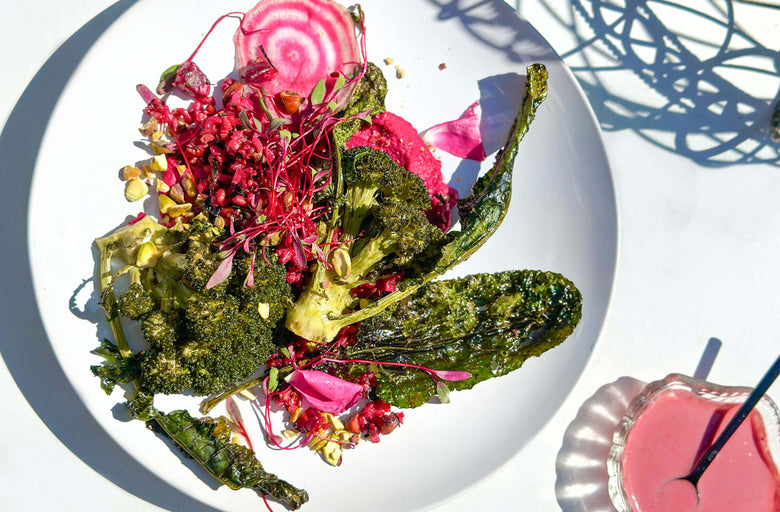So here we are, almost a month into the New Year. Maybe you’re still going strong with your chosen resolution, whether that’s meditating regularly, hitting the gym, or getting your daily greens.
Or maybe… not. Maybe all that fired-up energy, intention, and willpower you woke up with on January 1st is lagging a little. Maybe you’re tired, bored, frustrated, over it.
It happens! The New Year adrenaline high can only last so long until it’s time to reorient. We know you’re probably here in part because you crave a renewed sense of motivation. In moments like these, looking to ancient wisdom—and the gifts and tools therein—is always a wise idea. We’ve done just that, in the hope of helping you reignite your personal resolution fire, and rewrite your own resolution-to-ritual rhythms in the meantime.

ANCIENT NEW YEAR’S WISDOM
Ancient wisdom abounds with symbolism and traditions surrounding the New Year, many of which can inspire us as we craft our own rituals now and throughout the year. Here are two:
The Q’ero, a community of farmers and healers who make their home in the Andean region of Peru, subscribe to a shamanic faith that recognizes divinity in all things—people, animals, rivers, flowers. Q’ero shamanism contends there’s a shaman within each of us, connecting us to the outside world and our deepest selves, and giving us the power to bring about healing and change. Concerned as they are with showing reverence to—and living in harmony with—the land, they mark the New Year by making a ritualistic offering of gratitude to Mother Earth, as a way of showing appreciation for her bounty and recognizing nature’s cyclical, transformational essence.
In Kabbalah—a centuries-old Judaic philosophy that takes a mystical interpretation of the Bible—the New Year is reserved for introspection. Guided by the inner light of awareness, Kabbalists practice teshuva, or “returning to the source,” a ritual of reflection, letting go of the past, and setting new intentions for the year.
It’s no accident that the concept of ritual emerges as a common thread across these traditions. By altering our consciousness and sharpening our focus on the reality that we want to create, rituals have the power to cause an energetic shift. This in turn catalyzes change throughout our lives—our bodies, our careers, our relationships, our souls.
CREATING YOUR OWN RITUALS
Set the tone for a transformational year, in which you not only become your best self, but define what “best” looks like and feels like to you—and only you. How can you take the traditional wisdom surrounding rituals and make space for it on this personal quest? Here are a few ideas:
- Connect with Mother Earth by eating plant-based foods that come straight from the source. Honor her by plating your meal and taking a moment to revel in its abundance.
- Establish a ritualistic practice of higher consciousness. Whether it be five minutes or an hour, block time to focus inward and meditate.
- Spend 10-15 minutes pen to paper daily, practicing mindfulness. Weed out the old stories that are stifling your progress and write new ones that lift you up.
- Nurture your mind-body connection through joyful movement. Spend 20 minutes each day moving, whether that be walking around the neighborhood, dancing in the kitchen, or practicing yoga.
FIND PEACE (AND POWER) IN THE PROCESS
While tapping into the collective impetus toward self-betterment is certainly a good way to keep your resolve up, the other side of the New Year coin is being far too hard on yourself for not meeting the goals you’ve set. In light of that, here’s one more piece of wisdom to bear in mind this month (and always), care of Buddhist thinker and author Pema Chodron. She posits that focusing too much on self-improvement becomes “a subtle aggression against who we really are.”
While harnessing the energy the New Year brings is powerful and promising, it’s risky to allow our self-worth to ride 100% on our ability to become something other than what we are right now. And it’s at odds with the practice of metta, or loving-kindness, toward ourselves.
In order to find peace—which will ultimately allow us to make space for the growth and change we so badly want—we’re better served to accept ourselves, even if (especially if) that means accepting our flaws and faults. When facing a challenge, setbacks aren’t failures, but part of the journey to be expected. The all-important thing, as Chodron puts it, is “befriending who we are already.”
By translating our New Year’s resolutions into meaningful, sustainable rituals—ones that we can practice day after day—our dreams and intentions can extend into the year and beyond, one ritual at a time.






